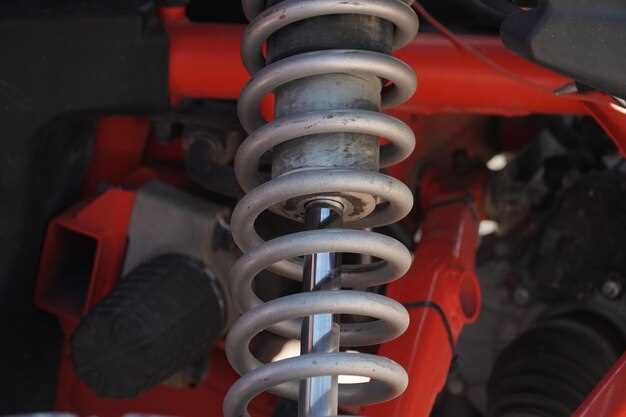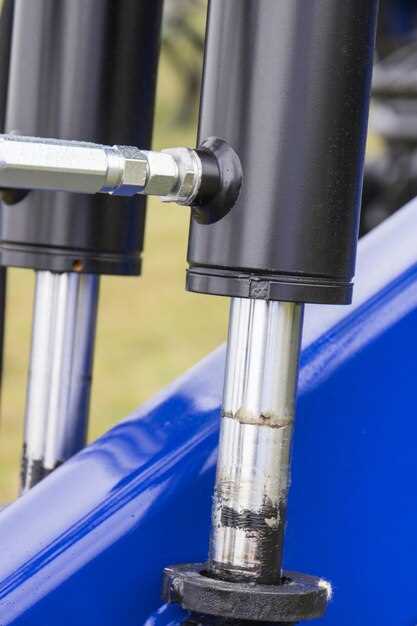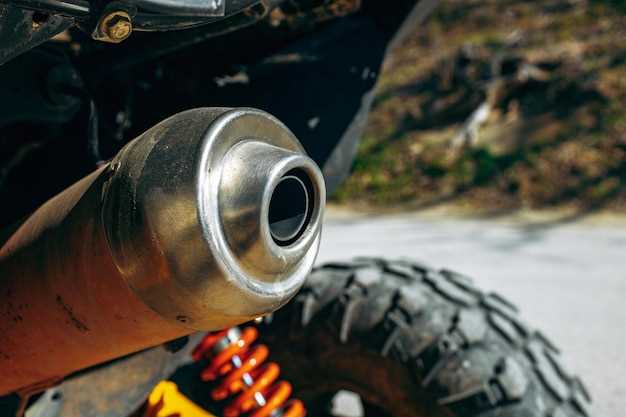
When it comes to enhancing your vehicle’s off-road capabilities, selecting the right suspension kit is crucial. A well-designed suspension system can significantly improve not only your vehicle’s handling and stability on uneven terrains but also its overall performance. This upgrade is essential for any off-road enthusiast looking to tackle challenging trails and obstacles.
One of the most popular modifications among off-roaders is a lift kit. By raising your vehicle’s height, a lift kit allows for increased ground clearance, enabling better passage over rocks, roots, and other obstacles that would normally hinder lower vehicles. Additionally, a lifted suspension can improve approach and departure angles, ensuring that your vehicle can conquer steep inclines and declines with ease.
Moreover, upgrading your suspension goes beyond just lifting your vehicle. A comprehensive suspension upgrade kit typically includes shock absorbers, springs, and sway bar links, all designed to work in harmony to provide superior off-road performance. With the right components, your vehicle can achieve a smooth ride over rough terrain while maintaining traction and control, making every off-road adventure both enjoyable and safe.
Choosing the Right Lift Kit for Your Vehicle
Selecting the appropriate lift kit for your vehicle is crucial for maximizing off-road performance. A lift kit enhances your vehicle’s suspension system, elevates ground clearance, and improves handling on rough terrains. Here are key factors to consider when choosing a lift kit:
| Factor | Description |
|---|---|
| Vehicle Type | Different vehicles require specific lift kits. Ensure compatibility with your make and model to avoid fitting issues. |
| Lift Height | Decide the amount of lift needed. Options usually range from 2 to 8 inches, affecting your vehicle’s center of gravity and stability. |
| Type of Suspension | Determine whether your vehicle has a coil spring or leaf spring suspension, as this will significantly influence the type of kit suitable for your needs. |
| Driving Style | Consider your primary use. Off-road enthusiasts may prefer a more robust kit, while daily drivers might opt for a moderate lift that balances performance and comfort. |
| Installation | Assess whether you will perform a DIY installation or seek professional help. Some kits require more complex installations and tools. |
| Performance Features | Look for kits that include performance shocks and struts for improved handling and ride quality, especially on rugged surfaces. |
Researching and comparing various lift kits with respect to these factors will aid in making an informed decision. A well-chosen lift kit not only enhances your off-road capability but also contributes to the overall aesthetics of your vehicle.
Benefits of Upgrading Shocks and Struts for Off-Roading

Upgrading shocks and struts is essential for enhancing off-road performance. A well-matched suspension kit can significantly improve your vehicle’s handling, stability, and comfort when tackling rough terrain. Here are some key benefits:
- Improved Ride Quality: Quality shocks and struts provide better cushioning over bumps and obstacles. This results in a smoother ride, allowing drivers to maintain control and comfort on uneven surfaces.
- Enhanced Stability: Upgraded suspension components help keep the vehicle stable during sharp turns and while navigating tricky trails. This stability is crucial for off-road driving, especially in challenging conditions.
- Increased Ground Clearance: Many lift kits incorporate upgraded shocks and struts, allowing for greater ground clearance. This prevents the undercarriage from getting damaged and helps the vehicle to clear larger obstacles.
- Better Flexibility: High-quality off-road shocks are designed to allow for greater wheel travel. This flexibility helps maintain tire contact with the ground, improving traction and performance in rocky or uneven environments.
- Durability: Off-road shocks and struts are built to withstand harsh conditions, including mud, dust, and extreme temperatures. Upgrading to more robust components reduces wear and tear, extending the lifespan of your suspension system.
In summary, investing in upgraded shocks and struts is vital for maximizing off-road capabilities. The benefits of improved ride quality, stability, increased ground clearance, better flexibility, and enhanced durability make it a worthwhile upgrade for any off-road enthusiast.
Impact of Coil Springs on Ride Quality and Handling

Coil springs play a critical role in the overall performance of an off-road vehicle’s suspension system. They provide the necessary support for the vehicle’s weight and determine how well it can absorb bumps and obstacles on rugged terrains. When considering a lift kit, the choice of coil springs can significantly affect ride quality and handling characteristics.
High-quality coil springs are designed to offer better shock absorption, which translates to a smoother ride over uneven surfaces. Their ability to flex and compress allows the vehicle to maintain traction, enhancing control and stability during off-road maneuvers. This flexibility is vital for navigating challenging landscapes where sudden impacts from rocks or ruts can occur.
An upgraded coil spring set can also improve handling by reducing body roll and maintaining better alignment of the tires with the ground. This is particularly important when tackling steep inclines or declines, as it helps the driver retain confidence in steering responses. A well-matched coil spring kit can complement other suspension components, leading to a harmonious system that maximizes both comfort and performance.
Furthermore, the height of the lift kit affects not only aesthetics but also the vehicle’s center of gravity. Coil springs designed for lift applications can enhance ground clearance while ensuring that the ride remains compliant and stable. A higher center of gravity may introduce a sense of instability; however, carefully engineered coil springs can counter this effect, balancing lift with optimal ride dynamics.
In summary, the impact of coil springs on ride quality and handling cannot be understated. When selecting a suspension upgrade for off-road performance, investing in high-quality coil springs that align with your lift kit’s specifications will ensure an improved experience, enabling you to tackle diverse terrains with confidence and precision.
Improving Articulation with Upper Control Arms
Upgrading your off-road suspension system is crucial for enhancing vehicle performance in rugged terrains. One significant component that contributes to better articulation is the upper control arm. An upper control arm kit is designed to improve wheel movement, allowing for greater axle flex and enabling your vehicle to navigate obstacles with ease.
When you invest in a quality upper control arm kit, you can expect enhancements in both suspension geometry and overall articulation. Stock upper control arms often limit the range of motion, especially when faced with uneven ground. By replacing them with aftermarket options, you gain a more extensive range of motion, which is vital for maintaining tire contact with the terrain, thus improving traction.
Additionally, upgraded upper control arms typically come with adjustable features. This adjustability allows for fine-tuning the suspension setup, accommodating various ride heights and improving the handling characteristics of your off-road vehicle. As a result, your suspension can better absorb shocks and impacts, making for a smoother ride on challenging trails.
Another advantage of upper control arm kits is the increased durability. High-quality materials like tubular steel or aluminum are often utilized in their construction, which enhances strength while reducing weight. This durability ensures that your suspension can withstand the rigors of off-road driving, thus offering long-term performance benefits.
In summary, investing in upper control arms is a pivotal way to elevate your off-road suspension system. Enhanced articulation leads to improved handling, increased traction, and a more comfortable driving experience on the toughest trails.
Understanding the Role of Sway Bar Disconnects
Sway bar disconnects are an essential component for enhancing off-road performance, especially for vehicles equipped with a lift kit. They allow for increased wheel articulation, which is crucial in navigating tough terrains. Here’s a closer look at their role and benefits.
- What are Sway Bar Disconnects?
Sway bar disconnects are devices that allow you to easily detach the sway bar from the axle or chassis. This disconnection permits greater suspension movement, improving traction and stability on uneven surfaces.
- How They Work
When the sway bar is connected, it helps keep the vehicle stable during turns and reduces body roll. However, in off-road conditions, a connected sway bar can limit the suspension’s ability to flex, causing tires to lose contact with the ground. Disconnecting the sway bar solves this by allowing each wheel to move independently.
- Benefits of Sway Bar Disconnects
- Increased Articulation: By allowing the suspension to flex more, vehicles can maintain better tire contact with the ground, which is vital for off-road traction.
- Improved Stability: Disconnecting the sway bar can lead to improved stability when navigating rocky or uneven terrains, enhancing overall control.
- Easy to Use: Many sway bar disconnect kits are designed for quick and easy operation, often with one-handed mechanisms that make it simple to toggle between connected and disconnected states.
- Installation Considerations
When installing a sway bar disconnect kit, ensure compatibility with your vehicle model and lift specifications. Proper installation is key to reaping the benefits while maintaining safety and performance.
In summary, sway bar disconnects are a valuable upgrade for off-road enthusiasts. They greatly improve vehicle performance in challenging environments by permitting enhanced suspension articulation and promoting better traction.
Factors to Consider When Installing Suspension Components
When upgrading your vehicle’s suspension for off-road performance, several key factors should be meticulously considered to ensure optimal functionality and safety. Firstly, the choice of a suspension kit greatly impacts the overall efficacy of your vehicle in challenging terrains. Select a kit that specifically matches your vehicle’s make and model to avoid compatibility issues.
Lift height is another critical aspect to evaluate. While a higher lift can improve ground clearance and approach angles, it can also affect your vehicle’s center of gravity and stability during high-speed maneuvers. Aim for a lift that provides adequate height while maintaining balance, as excessive lifting may compromise handling.
The type of terrain you plan to tackle should guide your selection of suspension components. Heavy-duty shocks and springs are ideal for rocky or uneven surfaces, while softer setups may be better for sand or mud. Consider your usual off-road conditions and select components that cater to those environments.
Installation processes can also vary significantly. Some suspension kits may require specialized tools or professional installation to ensure proper alignment and functionality. Assess your mechanical skills before committing to a DIY approach; improper installation can lead to performance issues or safety hazards.
Finally, keep in mind the weight of any additional modifications or gear you may carry. Heavier payloads can necessitate stronger suspension components, impacting your choice of springs and dampers. Ensuring that your suspension system can handle the adventurers ahead will result in a more reliable and enjoyable off-road experience.
